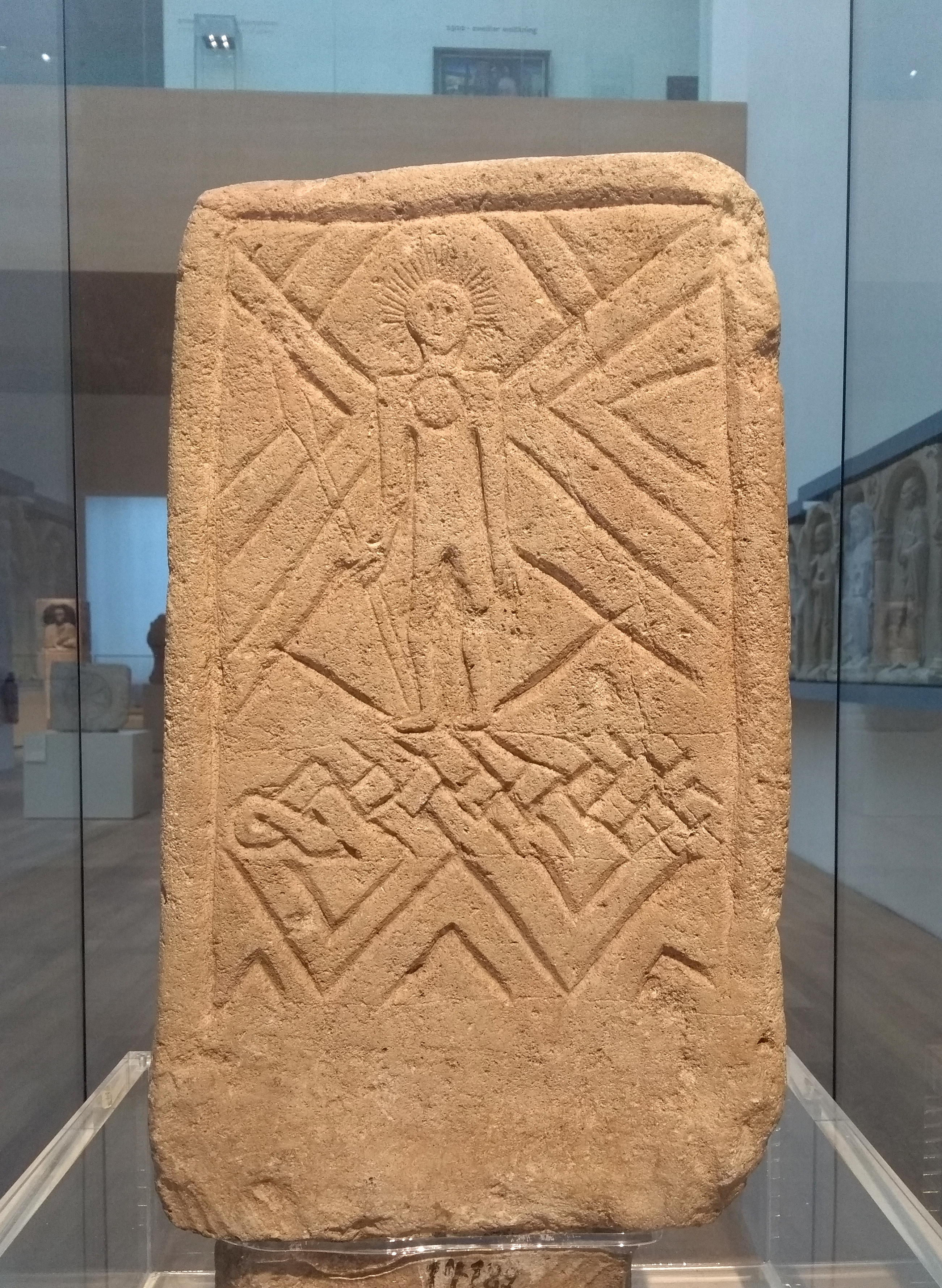Winifred Hodge Rose
This photo shows an unusual stele or grave-marker from Niederdollendorf, Germany. It was found in an empty grave in a Frankish cemetery dating from 600 or 700CE, but could be older, and its meaning remains unclear.

Here is my own interpretation. I consider this ancient figure to be an illustration of the Hugr and its power. The Hugr itself is represented by the circle on the chest of the warrior, over his heart. The swelling and emanating power of his Hugr is represented by his hair standing on end and the forceful lines and shapes radiating out from his body. His spear is a symbol of his power to focus his Hugr’s will and desire.
Compare the idea of the Hugr directing a spear’s power with this description of a sword in the Lay of Helgi Hjorvardsson: “There’s a ring on its hilt, hugr in the middle, and terror on the point” (verse 9; Poetic Edda). Why is ‘hugr’ in the middle of the sword? Hugr is the force of direction, of intention, of courage and action, and forms the supporting structure of the sword, and of the spear.
I interpret the braided lines that the warrior is standing on as a representation of the interwoven strands of human life, culture, society, from which we all arise and which support all our interactions and achievements in life.
Finally, I see the zigzag lines at the bottom of the stele as representative of powerful waves of ancestral forces, influences, and support, that underlie and empower us in Midgard life. These ancestral forces are the Hugrs of the departed, sinking down and rising up like waves, influencing our Midgard lives.
There are many runes to be seen in this carving, especially Kenaz, Ingwaz, and Gebo. These, along with the interpretations I offer above, provide a fruitful context for meditation on the Hugr and its role in our life.
Reference for photo: https://upload.wikimedia.org/wikipedia/commons/c/cc/Grabstein_von_Niederdollendorf%2C_R%C3%BCckseite.jpg